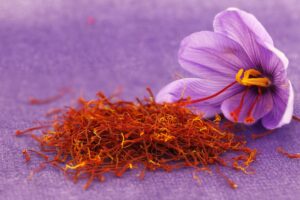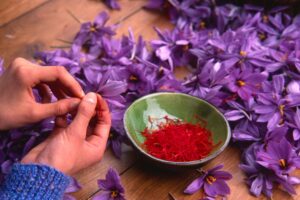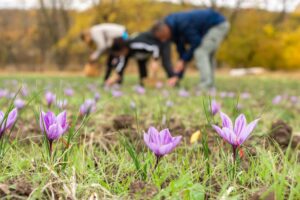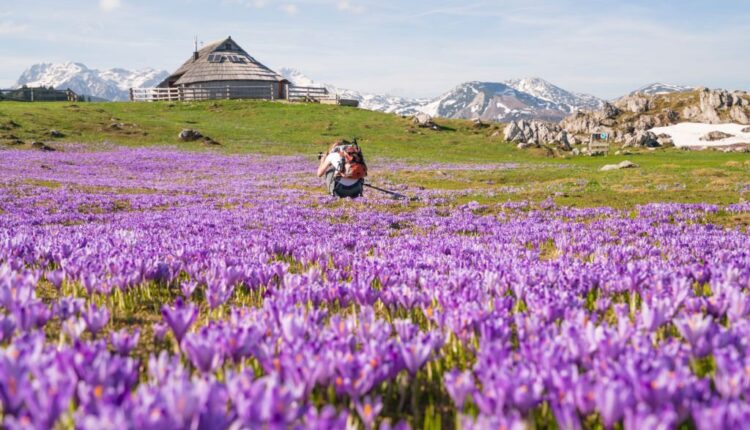How is saffron harvested
How to Use Saffron & in baking & in cooking & in curry & in rice & for skin
How is saffron harvested in Iran | cultivation, irrigation, and more
The first thing that comes to mind when we hear saffron is the most expensive spice in the world is: how come? How is saffron harvested and what makes it the most precious spice by weight?
Well, the story behind saffron or so-called “The red gold” will answer all your questions. The native of Iran, this marvellous crocus is not so easy to grow and harvest. On the other hand, pure saffron only grows in a special climate and needs extra care for proper cultivation.
So, keep reading if what to know the reasons behind what makes saffron so useful and expensive in the whole world.
The story behind the Red Gold

Before we get to how is saffron harvested, let’s see why it’s the main and crucial part of many nations’ culinary culture. Saffron, the red gold, is a delicate spice that has been used in many dishes for more than 3,000 years (about 1600 BC). It has a unique aroma like nothing you have ever smelled before. Many wonders, why Asian foods, especially Iranian foods, are so delicious.
Well, the secret to that lies behind this ancient spice. Saffron gives a reddish colour to everything it touches, making foods, teas, syrups, and so on taste heavenly. Surprisingly, that’s not all! In addition to its nutritional value, this spice also has medicinal value and is used to treat many diseases. So, now you know why we call it the Red Gold. Although, it might be hard to believe that it’s even pricier than gold!
Check out our article on the Does Saffron Lighten Skin ?
What saffron needs to grow
Saffron comes from saffron crocus, aka crocus sativus; a purple flower with red strands. Every flower only has three stigmas which are carefully collected and dried before use. And just like other flowers, it needs a special environment and conditions in order to grow and flourish.
You may be wondering why this spice is so expensive? What’s so unique about it that makes it as costly as gold? Well, it’s actually because of the labor-intensive process of cultivating saffron strands. If you learn how is saffron harvested, you’ll understand why. Until then, let’s see what this precious spice needs to grow and gets into our hands with the best quality.
Climate

You should plant the saffron seed in warm and dry climates. It mostly needs hot summers and mild winters. That’s why in Iran, farmers plant the seed in the middle of summer. On the other hand, the crop needs a cool temperature, about 5 degrees, to grow. This is the reason why the seeds won’t flourish until mid or late fall.
You should know that saffron can also be cultivated in cold climates. In general, the saffron plant’s tolerance range is from 0 to 20 degrees, which means that if the saffron bulb is exposed to temperatures below 0 degrees or above 20 degrees, it will be destroyed.
Irrigation
Irrigation is the most important part of how is saffron harvested. Like most spices, saffron does not need much water to grow. Especially during summer, when the plant is sleeping, it should be away from rain or humidity. And in fall, winter, or early spring, when the plant is growing, a rainfed agricultural system will be enough.
After farmers plant the seed in summer, they should irrigate early in autumn. 15 to 20 days after irrigation, the first purple flowers of saffron will grow. You cannot grow saffron in a climate that has more than 30 mm of rain in the second half of summer.
Soil

In order to grow quality saffron, you’d better plant it in sandy soils. However, in many countries, it can also flourish perfectly in silt soil or drained clay soil. Nevertheless, it won’t have the quantity or quality of the saffron that has been grown in sandy textures.
The soil must be drained and fertile for planting saffron. The pH of the soil should be between 7 and 8 and it must be calcareous. The saffron plant will grow better only in soil that is salty, acidic, and lacking in nutrients. The ground should be free of weeds and rocks as well.
Check out our article on the When And How Often Is Saffron Harvested?
So, if you want to determine saffron quality, make sure they have grown and cultivated it in sandy soils. Don’t hesitate to ask the supplier how is saffron harvested and delivered to your hands.
Saffron producing countries
Based on the weather condition, type of soil, and irrigation saffron crocus mainly grows in Iran, India, Greece, Morocco, Spain, Italy, and the Netherlands. Every year, nearly 20 tons of saffron is produced globally and Iran produces approximately 88% of it.
Unfortunately, nowadays, global warming has decreased the quality of saffron around the world and the amount of crops is declining day by day.
How is saffron harvested?

As we mentioned, the spice comes from a follower called “crocus sativus” which is a very delicate plant. As a result, it’s not possible to harvest it using any kind of machinery and the farmers do the whole process manually. That’s why this aromatic spice is so expensive and hard to cultivate. Now let’s see how farmers cultivate saffron step by step:
- The process is done by hand first thing in the morning. If the flowers are exposed to the sun’s rays, they wither and lose their quality. For this reason, farmers harvest them early in the morning.
- The time of harvesting saffron flowers is very important as they close up when the sun rises. So, the farmers should start picking them up from 5 AM to 9 AM.
- Each flower contains three saffron strands which farmers pull out manually.
- After that, these stigmas are left to dry. Sometimes they are also toasted for better results.
- Finally, they are wrapped up and delivered to consumers around the world.
The process of harvesting saffron is so sensitive that the smallest mistake can cause millions of dollars’ worth of damage. What’s more surprising is that for every 100,000 to 150,000 flowers farmers harvest one by one by their hands, only 1 kilo of saffron will be obtained! And each kilogram of saffron requires around 370 to 470 hours of work. All these factors are involved to make saffron the costliest spice in the world.
How to determine the saffron quality

Saffron is a very powerful spice. Only a small portion of it can change your food’s taste, aroma, and colour significantly. If you like a signature of saffron in your foods, we recommend purchasing the threads instead of the powder. Moreover, by looking at the colour of saffron threads you can ensure its quality; the darker the colour, the better the quality.
Saffron is like wine. You can store it for as long as you want and not only will it not spoil, but its taste and aroma improve over time. However, keep in mind that you should store it in an airtight container in a dark and dry place for better protection.
Now that you know how is saffron harvested, you understand there is no such thing as cheap saffron. So, the next time you encounter low-priced saffron in the markets, you can be sure that something is wrong.
Sources:


